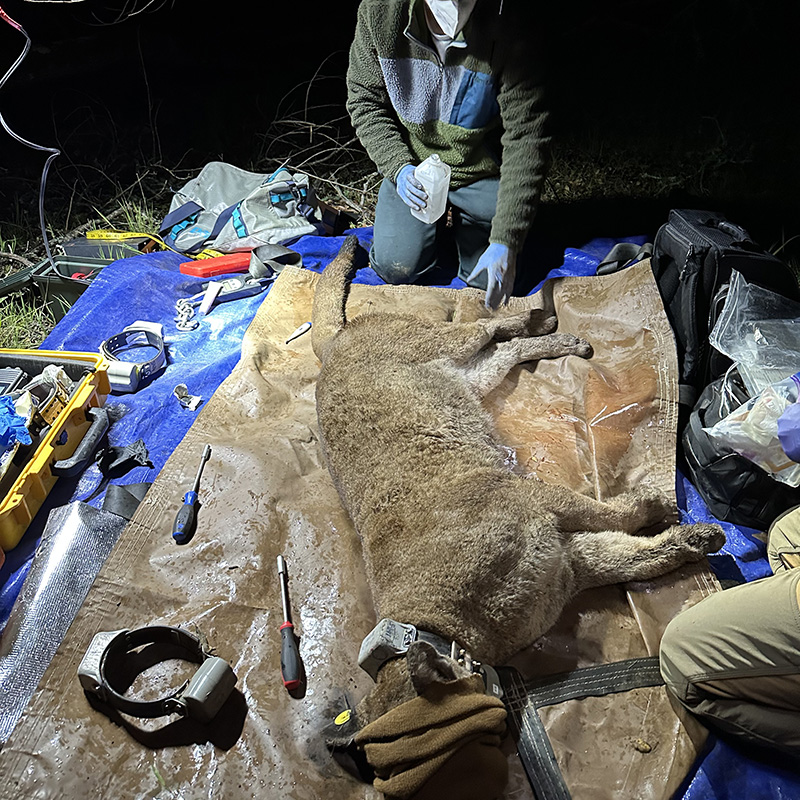Posted: 5/12/2025
Mountain lion researcher named SNR's 2025 meritorious master's student
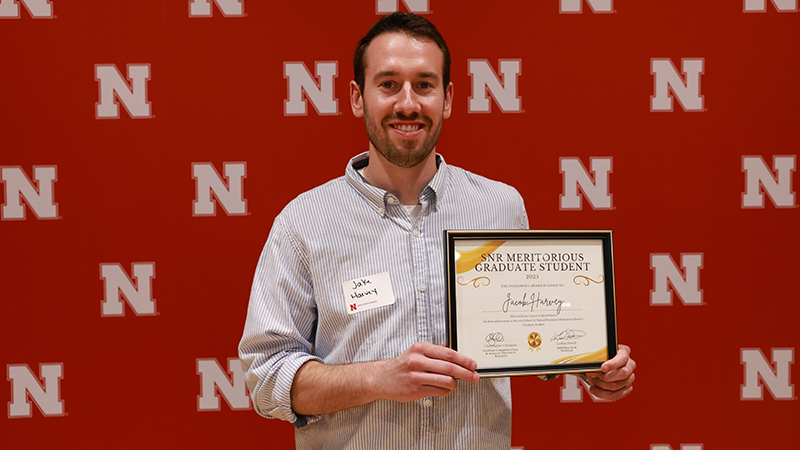
By Ronica Stromberg
Jake Harvey took home a 2025 Meritorious Graduate Student Award from the School of Natural Resources at its annual spring banquet. What he took to the banquet was an easy-in for such mixers and cocktail parties. When people ask him what he does, he says he researches mountain lions.
"It's a good conversation starter," he said.
Originally from Pennsylvania, Harvey studied elk, bobcats, bighorn sheep, coyotes and mountain lions on summer projects while an undergraduate at Paul Smith's College in upstate New York. When considering master's programs, he wavered between studying ungulates or carnivores, hooved animals or those with big teeth. Big teeth won out.
Harvey came to University of Nebraska–Lincoln in January 2022 to research mountain lions in North Bay, California, with John Benson as his advisor. He is finishing his master’s work this month and published his first two papers this semester, in Biological Conservation and Canadian Wildlife Biology & Management.

"That was really exciting to get those out, and then I fell into a little slump once those were published. I was panicking like, 'Oh, did I make any errors? Was there something wrong?' So, this award was at a good time to be uplifting and motivating like, 'OK, I must be doing something right.'
Benson, the Nebraska professor of wildlife ecology advising him, confirmed Harvey has been doing several things right.
“Aside from always being a positive and fun person to be around and work with, I think what I respect most about Jake is that he is so well-rounded," Benson said. "A lot of wildlife biologists enjoy fieldwork and being outside. Fewer excel at the intellectual sides of research, including asking questions, analyzing data and writing. Jake brings the same high level of motivation to all these tasks and does them all very well."
Harvey and Benson have been working on the Living with Lions project led by Audubon Canyon Ranch and True Wild in California, with research partners Sonoma County Wildlife Rescue and Institute for Wildlife Studies. Since the project start in 2016, the project team has collected genetic information on 50 mountain lions and collared 35 of them. The Living with Lions project captures mountain lions in the North Bay using cage traps. The project is also legally permitted to capture mountain lions following livestock depredation in California.
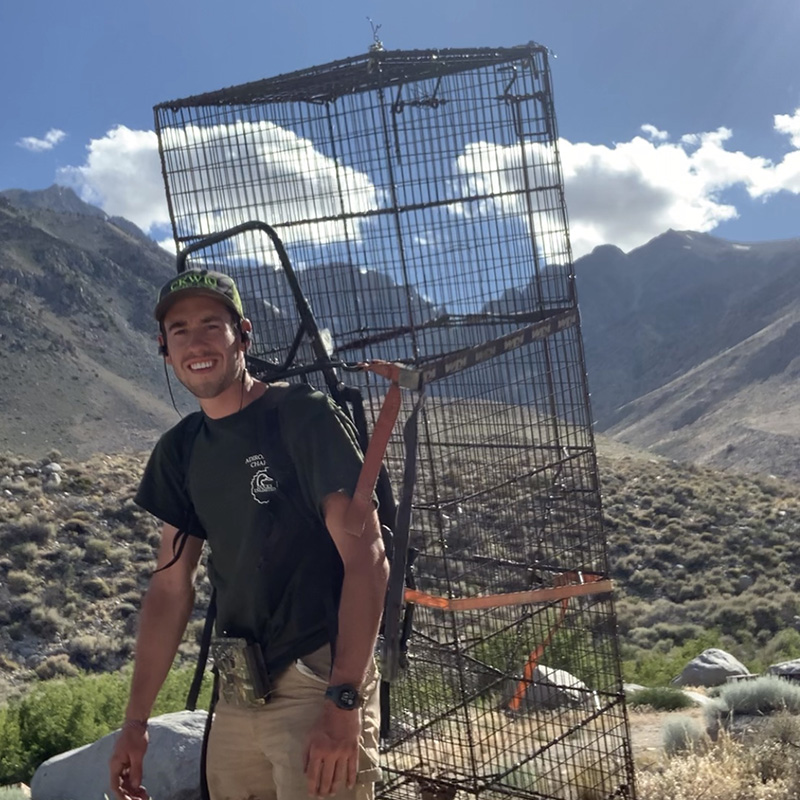
California law prohibits the hunting of mountain lions, but if a lion kills livestock, owners can request a permit granting them 10 days to kill the offending lion. Harvey, Quinton Martins from the Living with Lions project and local veterinarians have worked with landowners to get permission to go on their land after a sighting or suspected predation. They will search for the missing livestock or kill site, set up trail cameras and try to capture and collar the lion.
Mountain lions hunt and feed at night, covering a carcass with leaf litter and dirt, called a cache, for later meals. Harvey and Martins will set up and camouflage a six-foot-long cage at the kill site or area of frequent sighting, baiting it with the kill or roadkill. When a mountain lion steps on a pressure plate in the cage, the door drops and locks.

The researchers monitor the cage with a motion-activated camera and will immediately respond to a capture. They tranquilize the lion for about 45 minutes, take its vitals and body condition metrics and collar it if it lacks one. Once the lion is collared with GPS, the researchers release it and monitor it via satellite.
A male mountain lion around Santa Rosa can have more than 10,000 private landowner parcels in its home range, Harvey said. They typically have two or three female mountain lions in their territory but chase away other males. They primarily eat black-tailed deer but occasionally kill a goat or sheep grazing in the area.
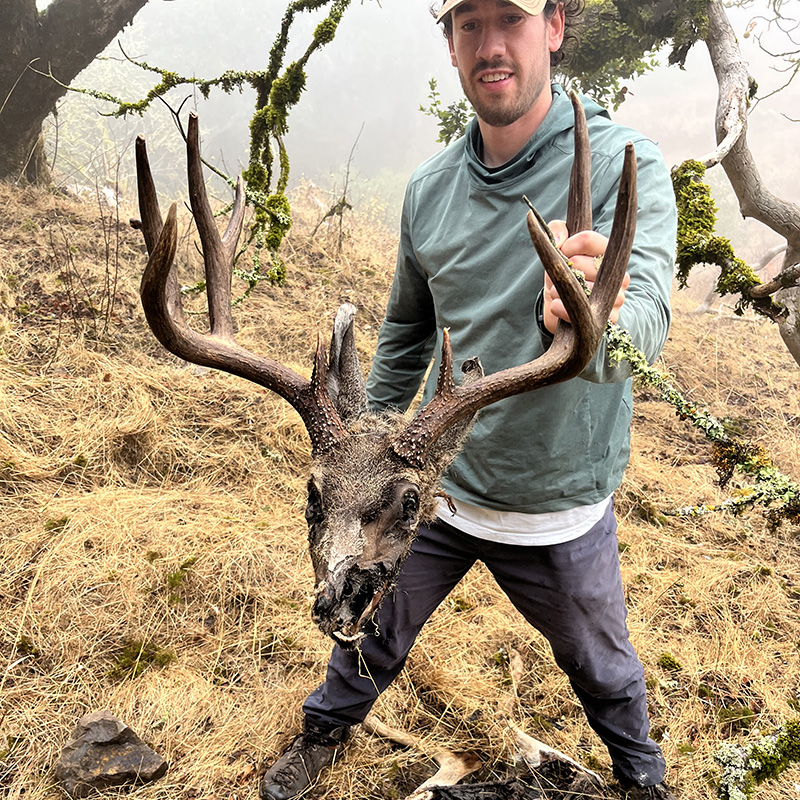
Harvey set out to learn how lions select prey sites on these human-dominated lands. He knew from earlier studies that lions select forests for hunting but wanted to identify which specific land features the lions were selecting, like grass for the deer to feed on, trees or shrubs. From monitoring lion movements and investigating kill sites, Harvey found that the lions selected trees.
That made sense, Harvey said, because lions hunt at night and tree canopies further filter out light and obscure their presence. Lions use stalk-and-ambush hunting techniques and can run from tree to tree, hiding in the understory, until close enough to attack prey.
The most highly selected hunting sites had both the grass to attract deer and the tree cover to make them more vulnerable, Harvey said. He and his coauthors found that adult male lions and adolescent females also were more likely to use an area closer to buildings if it had lots of tree cover, he said.
"Some of the mountain lion sex and age classes seemed more comfortable being in closer proximity to people when there were high values of tree cover, which seems important from a management and conservation perspective in such a human-dominated landscape," he said.
Most people in the North Bay region of California want to keep lions there, he said, and sharing such findings can aid in allowing lions to continue coexisting with humans in their native range. The area has had numerous wildfires since 2017, and to help prevent their spread, homeowners and businesses are required to mow understory and keep plant growth down in a 100-foot buffer around buildings. Harvey said removing understory could reduce conflict with lions also.
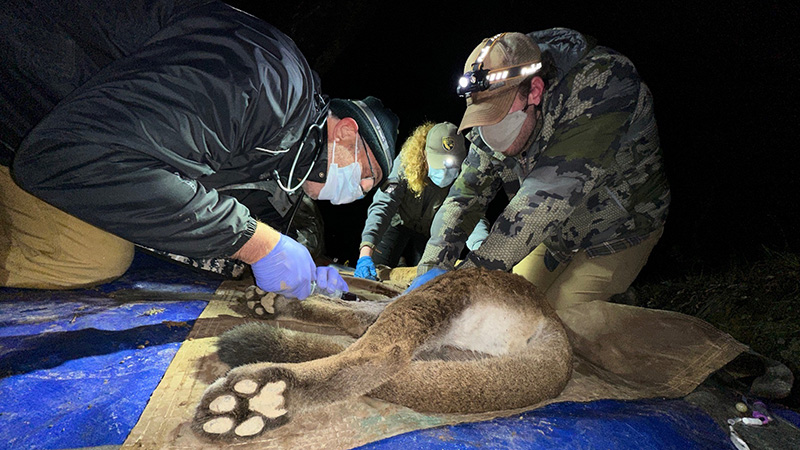
Since lions typically hunt at night, he recommended penning animals at night in lion-proof structures away from woods. Chances of encountering a lion during the day are much reduced, he said. He has been educating landowners in the area on these topics to help them avoid conflict.
"I met one-on-one with hundreds of landowners and had the opportunity to talk about coexistence and just answer any questions they may have or bring science to their door in a way where it's not some jargon-filled article that they see on Facebook," he said. "It's just a 20-something-year-old kid hopping out of a car and walking in their backyard with them."
One concern he heard from landowners was that either there might not be enough deer to feed the lions or the lions might overpopulate. Harvey said a lack of wild prey could reduce lion numbers but an overabundance of prey does not mean lion populations will greatly increase. Because male lions require extensive home ranges, they keep their population in check. To roughly gauge lion populations on a landscape, he said a researcher could piece their ranges across it.
While lion populations may seem to be increasing with increased reports of lion sightings, Harvey said he thought the real increase was in use of technology like cameras on doors.

"We're seeing more and getting more sightings because there are extra eyes out there looking in the form of technology," he said.
He also cautioned that for a lot of areas, little knowledge exists on local lion populations and findings may be specific to an area.
"What may be the case in this human-dominated landscape isn't the case in other areas,” he said. "So, it's important for these smaller projects to just look through a close microscope and get an idea of what's happening."
Harvey said he would like to continue at Nebraska to earn his doctorate with Benson advising and is seeking funding. The research subject he’s eyeing now differs from mountain lions as much as cats differ from dogs. What’s in his sights? Wolves.
